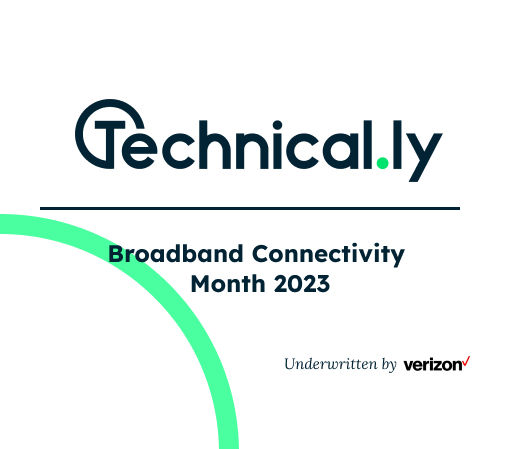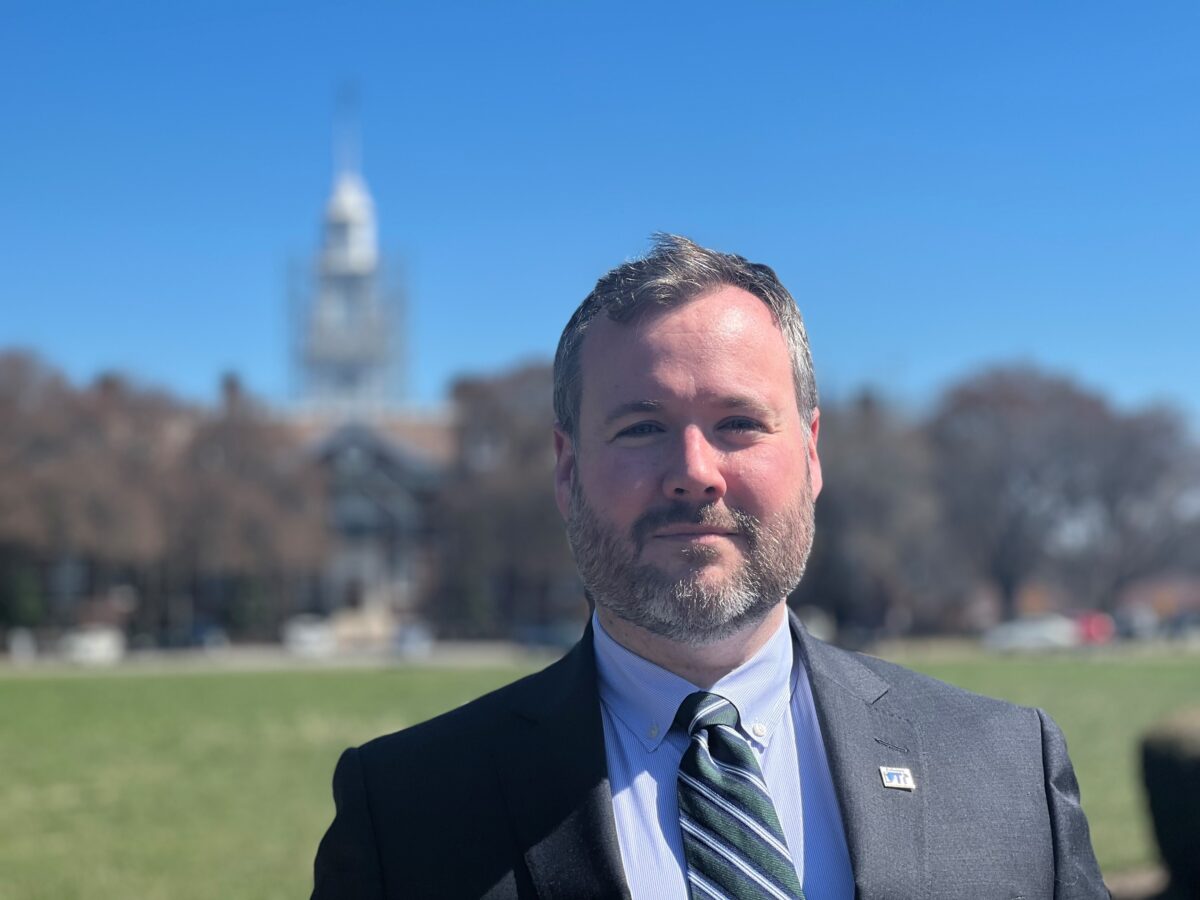Six months ago, Roddy Flynn returned to Delaware to take on the executive director position for the newly formed Delaware Broadband Office. The agency, housed within the state’s Department of Technology and Information, has a mission to get high-speed internet into every home and business in the state.
Flynn, who started his career in Delaware as a law clerk to the Honorable Justice Henry duPont Ridgely and a litigation associate at Richards, Layton, and Finger, had spent eight years in DC. Most recently, he was deputy director of congressional affairs for the National Telecommunications and Information Administration, where he led congressional affairs for the Internet for All initiative. While in DC, he also held executive director positions with Equality PAC and the Congressional Equality Caucus.
In addition to making broadband accessible, the Delaware Broadband Office is working toward long-term Broadband Equity, Access, and Deployment (BEAD) Program funding for continuing connectivity and digital equity programs. That federal program launched in 2021 as part of the Biden-Harris Administration’s Infrastructure Investment and Jobs Act, and in June, allocated $42.45 billion to be divided among states to improve broadband infrastructure, depending on the number of unserved locations each state had on the FCC’s map. Delaware received $107 million. (Here’s Technical.ly’s brief history of Delaware broadband infrastructure expansion, as of March 2022.)
We asked Flynn five questions about his work, and what’s next for broadband connectivity in the First State.
So, how are things going with broadband in Delaware?
Things are going well. Our mission is to make sure that every Delawarean has full access to high-speed internet. So the big part of that is building out physical infrastructure so people can subscribe to the internet if they would like to, but another chunk, just as important, is lowering all the barriers that people face in taking full advantage — meaning, cybersecurity, device access, affordability, accessibility for people with visual and hearing differences, workforce development, making sure that Delaware is a place that not only can you subscribe to the internet, but you can afford to and you’re able to take advantage of all the resources that in 2023 so many people take for granted. Eighty percent of the state never has to think too much about how they’re going to get on the internet, or are they going to be able to have a strong enough connection for a job interview or a training course. But that is the reality for a small but really important segment of our state.
What have been your biggest challenges so far?
The one that I lay awake at night about is just finding every address — you would think that in the year of our lord 2023 we would have good enough maps, but turns out mapping is very challenging. And we have a number of different data sources that we’re pulling together into one group, but at the end of the day, about six months from now, we need to have a final list of who are the folks in Delaware [lacking high-speed internet]. And I think we’re very, very close. We have about 9,000 addresses that we have identified as not having high-speed internet and are not covered by an existing federal program. I don’t imagine there are more than a few hundred folks that we’ve missed, but those few hundred folks are probably already marginalized in a lot of different ways. So we need to do everything we can to try and find them before we have to close the list.
[Editor’s note: Here’s how broadband mapping efforts are going in nearby Pennsylvania and Virginia.]
At this point, how are you looking for those last few homes?
We have to start with the Federal Communication Commission National Broadband Map, that’s our starting point. They have a relationship with a contractor that we’ve also engaged in order to get the best updates to that map as quickly as possible. In addition to working with our internet service providers who have teams out on the ground, we get a lot of calls from our ISP saying, “Hey, we found this house set back a certain distance from the road, and it’s not on the map.” So there are really great partners, and also people self-reporting, emailing us, calling us, talking to their state legislator who then reaches out to us on their behalf to say, “This is the house that doesn’t have internet,” and then we go through to verify that to make sure it’s true.
Where are you seeing the most gaps?
When it comes to the infrastructure challenges, a lot in Sussex and Western Kent and a little bit in New Castle. But when it comes to the other barriers that people face, it’s really spread all across the state and impacts our seniors, low-income families, the incarcerated populations, and what we hear the most about the barriers they face in accessing the internet are affordability, device access and being afraid of getting scammed. Those are the three biggest things that we hear about right now.
You mentioned workforce development. What will that look like?
For our infrastructure work, we’re going to have this massive investment coming in the state of $100 million, and we have to make sure we have people in place to actually build out those fiber lines or put up those wireless towers. So we’re working with some national partners and some local partners on getting a good state of the workforce, building up the workforce through training programs. On the digital equity side, something I spend a lot of time thinking about [is], how can we make sure that our tech and telecommunications workforce in Delaware represents all of our communities? Because we can’t be a fully digitally equal society unless everyone has all the resources necessary to pursue tech and telecom jobs. Including, do they have role models? Do they have folks that they see themselves represented up in these jobs? And if not, how can we get there?
You can keep up with the latest in Delaware Broadband via Delaware.gov.

This editorial article is a part of Broadband Connectivity Month of Technical.ly's editorial calendar, underwritten by Verizon. Verizon is a Technical.ly Ecosystem Builder client.
Before you go...
Please consider supporting Technical.ly to keep our independent journalism strong. Unlike most business-focused media outlets, we don’t have a paywall. Instead, we count on your personal and organizational support.
3 ways to support our work:- Contribute to the Journalism Fund. Charitable giving ensures our information remains free and accessible for residents to discover workforce programs and entrepreneurship pathways. This includes philanthropic grants and individual tax-deductible donations from readers like you.
- Use our Preferred Partners. Our directory of vetted providers offers high-quality recommendations for services our readers need, and each referral supports our journalism.
- Use our services. If you need entrepreneurs and tech leaders to buy your services, are seeking technologists to hire or want more professionals to know about your ecosystem, Technical.ly has the biggest and most engaged audience in the mid-Atlantic. We help companies tell their stories and answer big questions to meet and serve our community.
Join our growing Slack community
Join 5,000 tech professionals and entrepreneurs in our community Slack today!

The person charged in the UnitedHealthcare CEO shooting had a ton of tech connections

Delaware students take a field trip to China using their tablets and ChatGPT

From rejection to innovation: How I built a tool to beat AI hiring algorithms at their own game




